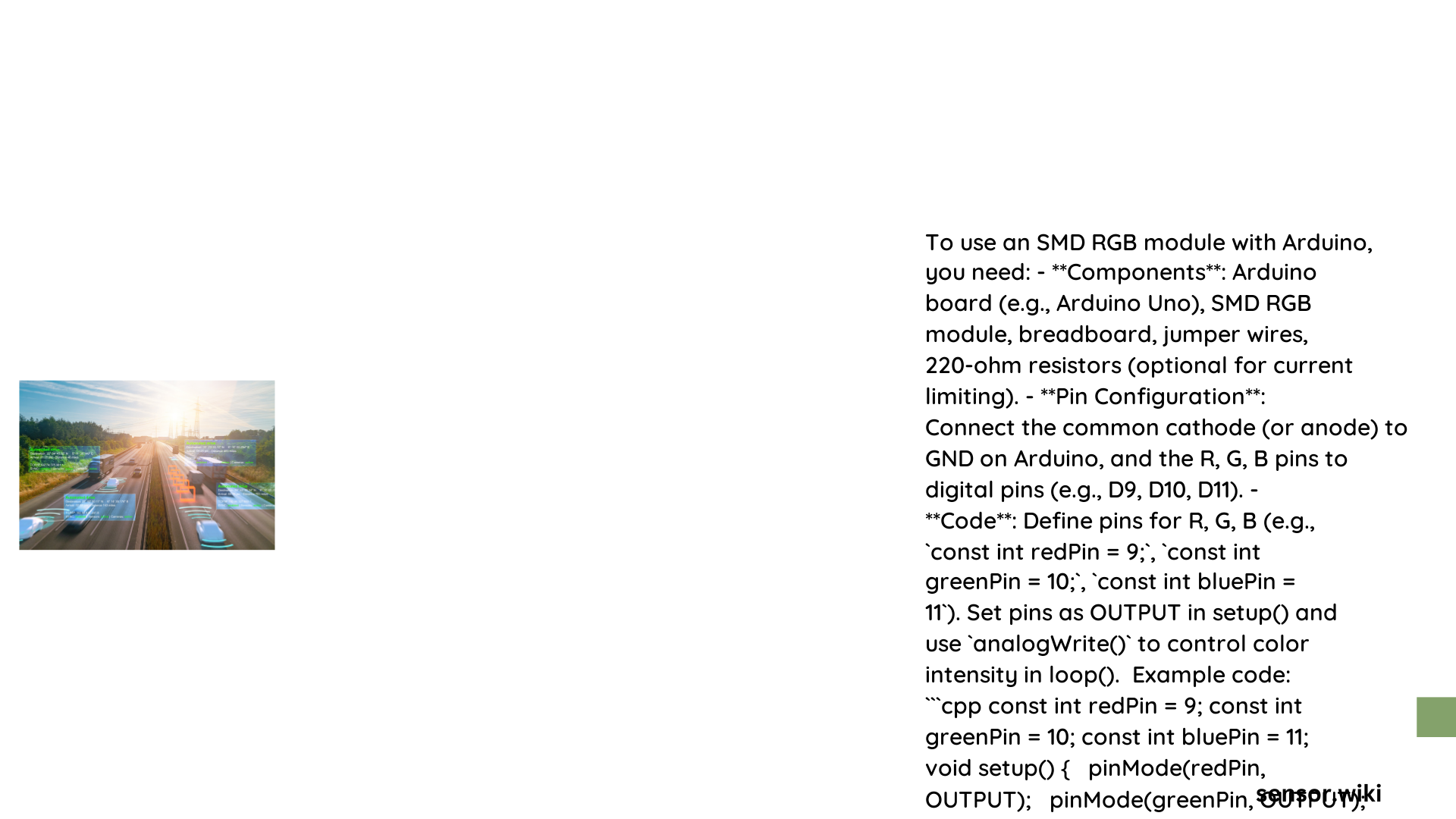The SMD RGB sensor module represents a versatile electronic component that enables precise color emission and manipulation through Arduino microcontrollers. These compact surface-mount devices provide developers and hobbyists with powerful capabilities to create dynamic color-changing projects, ranging from decorative lighting systems to interactive visual displays. By understanding the intricate pinout configuration, wiring techniques, and programming strategies, makers can unlock sophisticated color control mechanisms that transform simple electronic circuits into vibrant, responsive systems.
What Are the Essential Pinout Configurations?
The SMD RGB module typically features four critical pins with specific functional characteristics:
| Pin Type | Voltage Range | Primary Function |
|---|---|---|
| Common Cathode | 0V | Ground Connection |
| Red Pin | 2.0-2.5V | Color Intensity Control |
| Green Pin | 2.0-2.5V | Color Intensity Control |
| Blue Pin | 2.0-2.5V | Color Intensity Control |
How to Connect SMD RGB Module to Arduino?
Required Components
- SMD RGB module
- Arduino board
- Jumper wires
- Optional 220-ohm resistors
Wiring Steps
- Connect common cathode to Arduino GND
- Route red pin to digital PWM pin (e.g., pin 9)
- Connect green pin to digital PWM pin (e.g., pin 10)
- Link blue pin to digital PWM pin (e.g., pin 11)
What Code Strategies Enhance RGB Control?

// Basic RGB Color Control Sketch
const int redPin = 9;
const int greenPin = 10;
const int bluePin = 11;
void setup() {
pinMode(redPin, OUTPUT);
pinMode(greenPin, OUTPUT);
pinMode(bluePin, OUTPUT);
}
void loop() {
// Demonstrate color transitions
setColor(255, 0, 0); // Red
delay(1000);
setColor(0, 255, 0); // Green
delay(1000);
setColor(0, 0, 255); // Blue
delay(1000);
}
void setColor(int red, int green, int blue) {
analogWrite(redPin, red);
analogWrite(greenPin, green);
analogWrite(bluePin, blue);
}
What Performance Considerations Exist?
- Color Range: Capable of producing 16,777,216 potential color combinations
- Power Requirements: Typically 2-5V operating voltage
- Response Time: Microsecond-level color transitions
- Durability: Rated for approximately 50,000 operational hours
What Advanced Techniques Can Be Implemented?
- Pulse Width Modulation (PWM) for smooth color fading
- Interrupt-driven color change mechanisms
- Sensor-triggered color responses
- Complex color animation sequences
Troubleshooting Common Challenges
- Inconsistent Colors: Verify precise resistor values
- Weak Illumination: Check power supply stability
- Communication Errors: Validate pin connections
Performance Optimization Tips
- Use hardware PWM pins
- Implement current-limiting resistors
- Minimize electrical noise
- Utilize efficient power management techniques
Practical Application Scenarios
- Ambient lighting systems
- Mood indication interfaces
- Interactive art installations
- Educational electronics projects
Technical Specifications
| Parameter | Specification |
|---|---|
| Operating Voltage | 2-5V DC |
| Color Depth | 8-bit per channel |
| Maximum Current | 20mA per channel |
| Mounting Type | Surface Mount Device (SMD) |
Recommended Best Practices
- Always use current-limiting resistors
- Implement proper grounding techniques
- Test individual color channels systematically
- Monitor thermal characteristics during extended use
Future Exploration Areas
- Integration with advanced sensor technologies
- Machine learning color recognition
- IoT-enabled color communication protocols
Reference:
– Arduino Official Documentation
– Electronics Tutorials
– Adafruit Learning Resources
